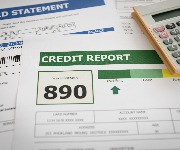iPhone 5S and iPhone 5C: what they will cost you

Apple's new iPhone handsets go on sale next week. Here's what you can expect from 5S and 5C, and what they will cost you
Apple has released details of two new models joining its line up: the flagship iPhone 5S and its new 'budget' smartphone, the iPhone 5C.
Apple's iPhone products are always incredibly popular, despite the big prices they tend to come with. But what's new about the 5S and the 5C?
Let's start by taking a look at the specifications of both handsets, starting with the 5S:
|
Feature |
5S |
|
Processor and speed |
64-bit Apple A7 chip with M7 co-processor |
|
Camera |
iSight: larger image sensor and improved flash for better low-light performance |
|
New features |
'Touch ID' fingerprint sensor New iOS 7 operating system New handset colour option: gold |
|
Battery life |
10 hours of talk time, or 10 hours of browsing, or 250 days in standby |
According to Apple, its new, improved handset is fast - very fast. Indeed, the new A7 chip in the 5S is almost twice as fast as the A6 chip in the iPhone 5. What's more, the company claims that the 5S architecture is 'desktop class' in speed tests.
The most obvious new feature of the 5S is a fingerprint sensor around the home button. This allows users to unlock their handsets without using passwords/passcodes. Touch ID also allows users to buy music and apps through the iTunes store without using passwords. Up to five fingerprints can be stored to unlock an iPhone 5S, of which only one can make purchases from an iTunes account.
The new handsets also include Apple's latest mobile operating system, iOS 7, with this update also available for existing iPhones. Battery life for active use for the 5S is 10 hours, versus eight hours for the iPhone 5, brought about by a slightly larger battery.
As for the 5C 'budget' model, it is essentially an iPhone 5 in all but name. The main difference is that it has a plastic casing, which is available in a wide range of bright colours. Your rear shell can be blue, green, pink, white and yellow, depending on which you prefer.
iPhone 5S versus 5C: pricing
Apple's products have a reputation for being sold at premium prices, but expensive price tags have not stopped Apple selling iPhones worth more than $150 billion since their original launch in June 2007.
Here is the pricing of both handsets, with wi-fi and contract-free:
|
Memory |
5S |
5C |
|
16GB |
£549 |
£469 |
|
32GB |
£629 |
£549 |
|
64GB |
£709 |
- |
Let's start with the upmarket 5S model. As you can see, even the entry-level 16GB handset will set you back just shy of £550, with the 32GB and 64GB models adding an extra £80 and £160 to this base price respectively. This is £20 more than the launch prices of last year's iPhone 5 models, making this handset more expensive than comparable models on offer from rivals Samsung, Sony and HTC.
As for the 'budget' iPhone 5C, it's not cheap by any means. In fact, it's more expensive than most mid-range handsets. Without a contract, the basic 16GB model costs £469, with each step up in memory costing £80 a time.
However you look at them, these two new handsets are pricey, especially when compared with similar high-spec models on offer from other providers. Then again, getting one on a contract should be easily affordable for keen users, with two-year deals likely ranging from £40 a month expected to prove popular with British buyers.
Then again, for many users paying an extra £80 to buy an iPhone 5S, rather than the corresponding 5C model, looks to be a smart move. For the extra money, you get a much faster, smoother online experience, thanks to the power of the new processor, plus a better camera.
Is Apple ripping off UK buyers?
Already the world's best-selling gadget, the iPhone will continue to sell in the millions. However, some UK pundits complain that we British are being ripped off by Apple's 'predatory pricing'.
For example, the cheapest 5C handset, the 16GB model, costs just $549 in the US, unlocked and contract-free. With £1 buying $1.58, this equates to just £347.47. Here in the UK, the same model costs £469, which is £121.53, or more than third (35%) more.
However, Apple's UK-quoted prices all include VAT at 20%, so the before-VAT price comes to £390.83. Even after excluding taxes, iPhones cost more on this side of the Atlantic.
A small step forward
The new iPhone 5S is hardly revolutionary, as some earlier iPhone designs were. Then again, at only £20 more than corresponding iPhone 5 models, they are not much more expensive. As for the iPhone 5C, it's at a steep price point for a 'budget' model and, therefore, unlikely to set the world on fire.
What do you think? Will you be getting one of the new models? Or is £709 an obscene amount to spend on a mobile phone? Let us know your thoughts in the comment box below.
Compare mobile phone deals at Recombu
More on mobile phones:
Where to sell your old mobile to pay for the new iPhone
Vodafone and O2 launch 4G price plans
The UK's worst mobile phone provider
Most Recent
Comments
-
in all honesty I can't understand the reason of the pricing of the iphone, considering that the android and windows 8 mobile operating systems offer more features especially customization, as well as the pricing on the relevant mobile stores which seem to offer cheaper apps. I've had an iphone but found myself going back to the android os, not for looks, but because in my eyes the iphone is too simple to use. And with Sony bringing out the xperia z1 with 20.7 megapixel camera, as well as having 16gb integrated memory with the ability to add a micro sd card upto 64gb and will still be cheaper to buy sim free than an iphone 5s there really is no comparison price wise. I will be doing a proper review of the new sony flagship mobile phone, but these days its just more of a case of people jumping on the bandwagon when it comes to new mobile phones and fanboys of any manufacturer.
REPORT This comment has been reported. -
I'm actually involved with designing and supplying case opening tools used in mobile phone repair, including a supply in the USA to one of the biggest Apple repair companies. iPhones are far from bullet proof, I have enough friends with broken iPhones who can attest to that and Apple products have had battery issues absolutely from the outset. Apple did not pioneer touch screen technology nor did the rounded corner device episode do much other than to highlight some of their absurd patent claims. Definitely a Marmite product, but the issue was really whether drooling over the latest overpriced offering could be justified in the context of a site forum supposedly devoted to best value and wide-ranging comparisons. I'm glad this debate opened up, but I do wish Lovemoney could extend product comparisons, rather than just highlighting new products or specific pricing deals.
REPORT This comment has been reported. -
"is £709 an obscene amount to spend on a mobile phone?" You really need to pose this question with the market (and technically) leading Galaxy S4 £300+ cheaper and the still highly capable S3 at around £250? Even the S5 due out in early 2014 will be cheaper and extend the gap in capability. HTC also offer excellent value products. This comparison stuff isn't so difficult ;-) Apple's challenge now is in Asia where they are losing share in the fastest growing and highest potential smartphone market to the more capable and varied Android phones. Apple is not a player either in the growing "phablet" sector (also very popular in Asia). These are reasons why Apple's share price took a hammering because the analysts know that the saturated, smaller western market is less discerning and made up of brand loyalists/fanboys/fashion sheep which will erode over time; just look at the slow death enveloping Blackberry and the demise of Nokia. That denouement will not happen to Apple but an analogous history of the Mac versus the PC during the 80s, 90s, 00s may not be far off the mark. Difficult to conceive that with Steve Jobs at the helm Apple would ever have introduced a budget phone. It is a panic reaction. Apple is not leading innovation anymore but following and that must be uncharted territory for a company as arrogant as theirs. Another reason why the analysts hammered them.
REPORT This comment has been reported.
Do you want to comment on this article? You need to be signed in for this feature









13 September 2013